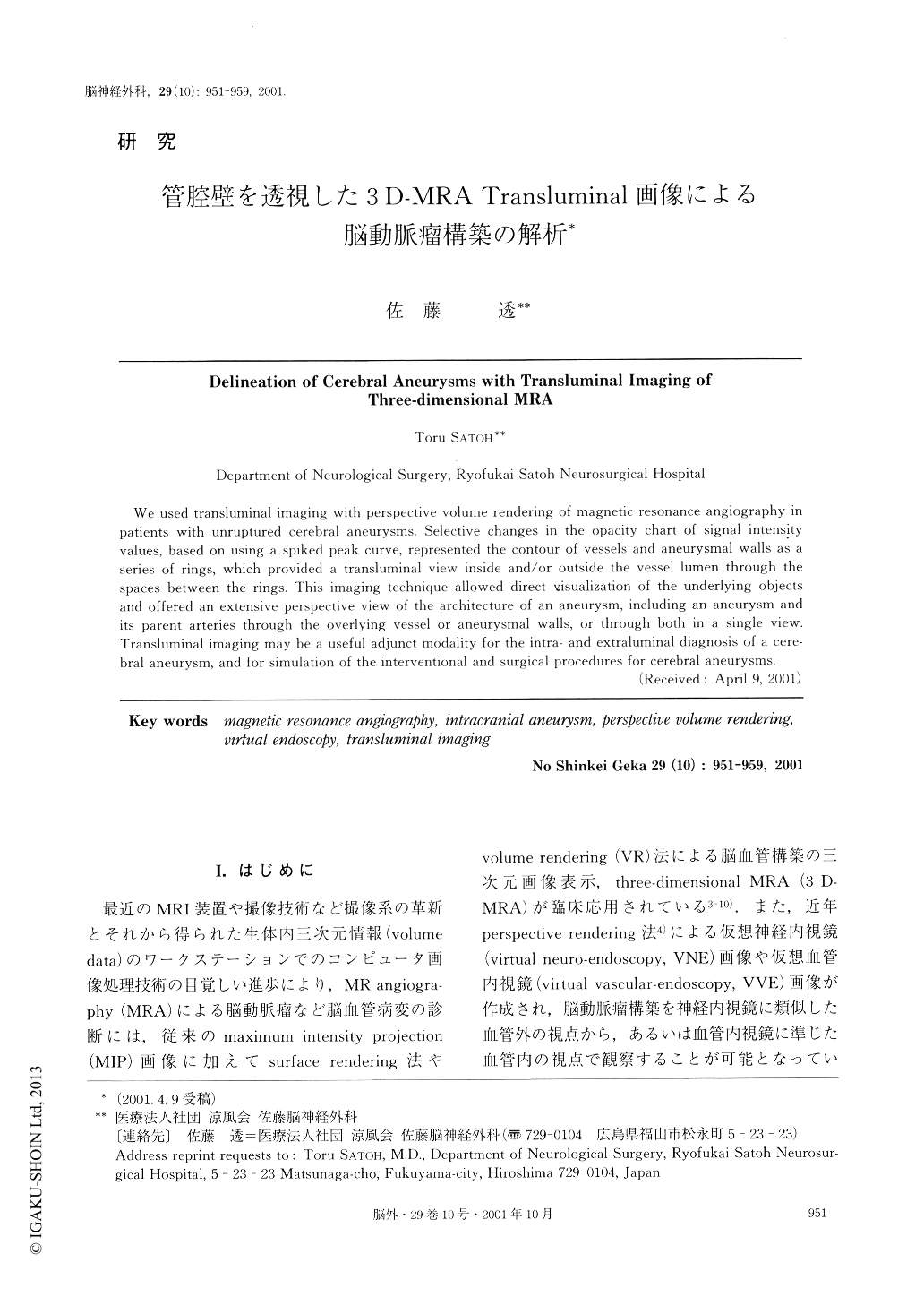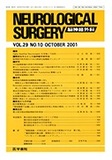Japanese
English
- 有料閲覧
- Abstract 文献概要
- 1ページ目 Look Inside
I.はじめに
最近のMRI装置や撮像技術など撮像系の革新とそれから得られた生体内三次元情報(volumedata)のワークステーションでのコンピュータ画像処理技術の目覚しい進歩により,MR angiogra-phy(MRA)による脳動脈瘤など脳血管病変の診断には,従来のmaximum intensity projection(MIP)画像に加えてsurface rendering法やvolume rendering(VR)法による脳血管構築の三次元画像表示,three-dimensional MRA(3D-MRA)が臨床応用されている3-10).また,近年perspective rendering法4)による仮想神経内視鏡(virtual neuro-endoscopy, VNE)画像や仮想血管内視鏡(virtual vascular-endoscopy, VVE)画像が作成され,脳動脈瘤構築を神経内視鏡に類似した血管外の視点から,あるいは血管内視鏡に準じた血管内の視点で観察することが可能となっている1-3,5-11).
VNE画像やVVE画像など仮想的三次元画像は,脳動脈瘤や親動脈などの脳動脈瘤構築を遠近感のある1枚の立体画像として表示可能であり,脳動脈瘤blebやneckなどの微細表面形態の描出,脳動脈瘤内腔や親動脈開口部の内面形態の診断,さらに血管内治療や開頭手術シミュレーションなどに有用である2,3,5-7,10,11).しかしながら,これらの画像では,管腔構造物は基本的に一塊の構造物として描出されるため,管腔壁を透視して管腔外から管腔内を,あるいは管腔内から管腔外の構造物を観察することは不可能であった.そのため,VNE画像では,脳動脈瘤と親動脈が重畳する場合やdomeが大きくneckが隠れる場合には観察視野が制限され,脳動脈瘤neckの描出は不十分であった2,7).また,VVE画像では,管腔壁と重畳する内腔構造の一部,さらには管腔外のすべての構造物が管腔壁構造で遮蔽されるため,画像自体から観察部位や観察方向など観察視点のオリエンテーションを把握することは困難であった3,10,11).
We used transluminal imaging with perspective volume rendering of magnetic resonance angiography inpatients with unruptured cerebral aneurysms. Selective changes in the opacity chart of signal intensityvalues, based on using a spiked peak curve, represented the contour of vessels and aneurysmal walls as aseries of rings, which provided a transluminal view inside and/or outside the vessel lumen through thespaces between the rings. This imaging technique allowed direct visualization of the underlying objectsand offered an extensive perspective view of the architecture of an aneurysm, including an aneurysm andits parent arteries through the overlying vessel or aneurysmal walls, or through both in a single view.Transluminal imaging may be a useful adjunct modality for the intra- and extraluminal diagnosis of a cere-bral aneurysm, and for simulation of the interventional and surgical procedures for cerebral aneurysms.

Copyright © 2001, Igaku-Shoin Ltd. All rights reserved.


